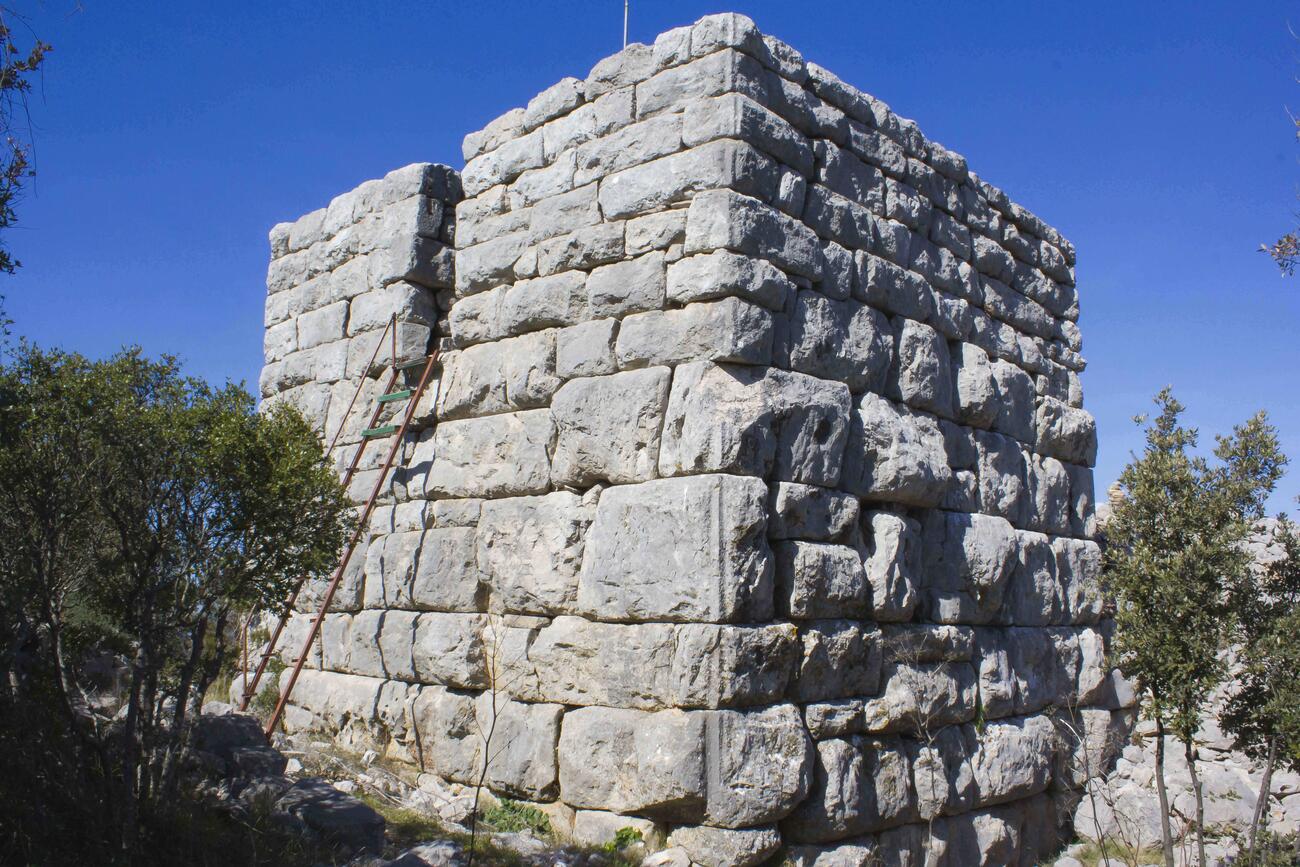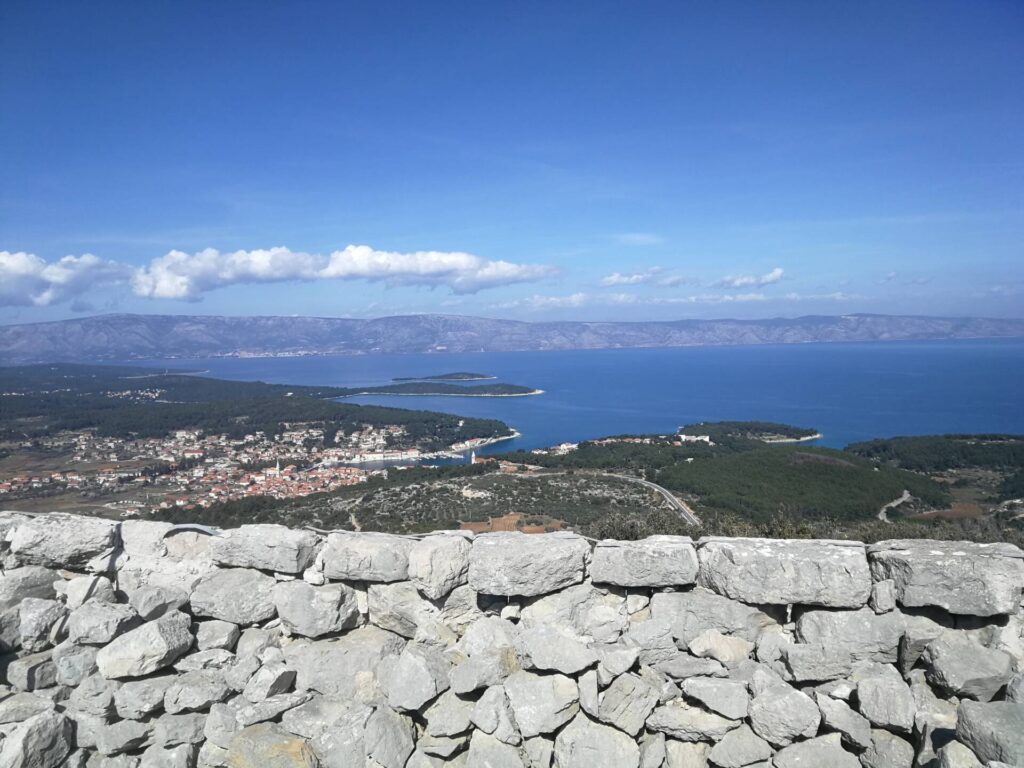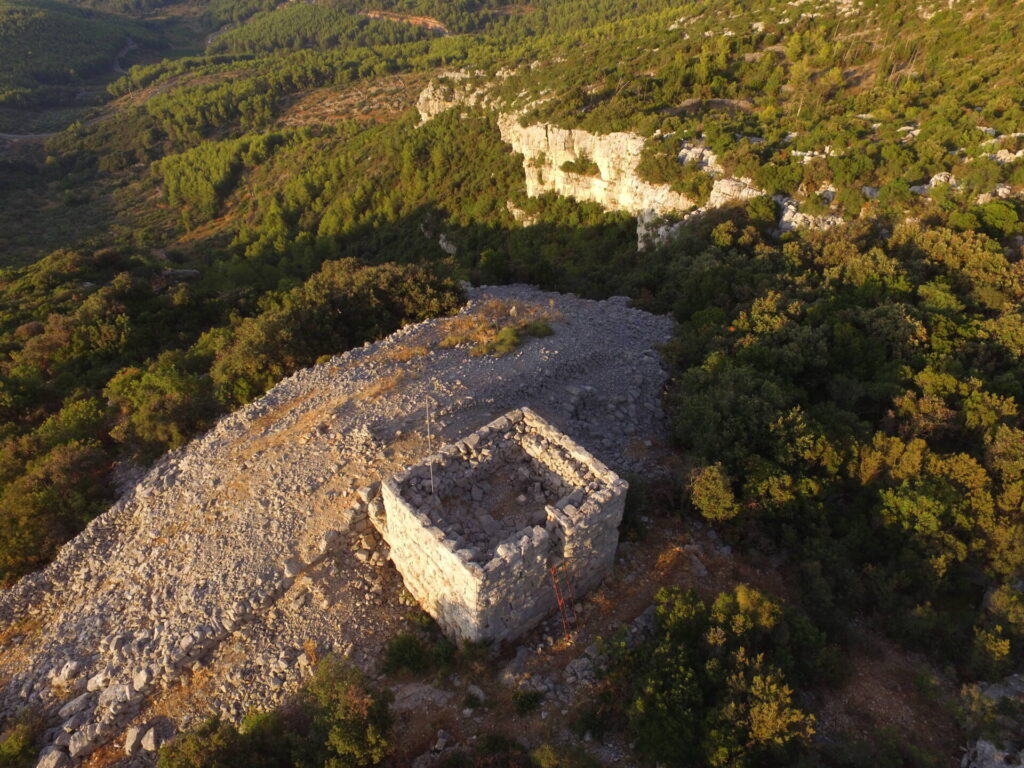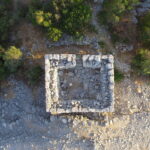
Tor – Hillfort and Historic Watchtower
About Tor:
Up on a hill to the south-east above Jelsa are the remains of a small hillfort and a watchtower whose local name is ‘Tor’. Standing at 235 metres above sea-level, the watchtower is a partially rebuilt, imposing rectangular structure. Its walls are made of massive blocks in drystone construction, with an entrance in the south wall. The walls measure 6.17 x 7.33 m horizontally, and the tower is approximately 6m high. It commands superb views over towards Stari Grad, the Island of Brač and the mainland.
Tor’s History:
The tower is thought to have been built in the 4th or 3rd century BCE, during the Iron Age. It is Hellenistic (i.e. Greek) in style, but it is not certain whether it was actually built by the Greeks, who established their colony in Pharos (modern-day Stari Grad) in the 4th century BCE), or by the Illyrians who were their predecessors in the area, and whose architecture was known to have been influenced by Greek styles. That is why the Tor is referred to variously as Greek, Illyrian or Graeco-Illyrian.

The tower was built into the ramparts of an earlier prehistoric Illyrian hillfort. The drystone ramparts measure c. 45 m in length, with a width of 16.4 m, height 3.6 m. The site was protected on its east, west and north sides by the steep slopes of the hillside. It is thought that there were dwellings in a terraced area to the north (looking towards the sea) in front of the southern rampart.
The Tor is registered as a protected Croatian National Asset, categorized as an archaeological site.

How to get there:
You have to go on foot, there is no vehicle access. The walk takes about 40 minutes, if you are reasonably fit. It is an uphill climb, and the path passes through beautiful cultivated and uncultivated countryside, so for both reasons you may want to take it more slowly. Make sure you have water with you, and wear comfortable shoes and appropriate clothing.
From Jelsa, the path starts from the church of Our Lady of Health (Crkva Gospe od Zdravlja). Originally, one walked up to the main entrance of the church, and the path headed off to the right from there, but that way has been blocked by the building of the new main road. Now, keeping right, you have to walk round towards the back of the church, and the path is marked heading to the right up towards the hills. It is marked at intervals along the way, until you reach the point where the path splits, and a signpost directs you to go left for the Galešnik fortress, or right for the Tor. The direct route to the Tor is steep, and the terrain is relatively difficult. It is much easier if you go via the Galešnik fortress, which adds about another twenty to thirty minutes to the walk, through very pleasant surroundings, with magnificent views.






